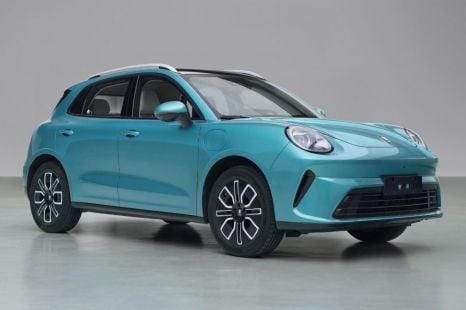

William Stopford
GWM is finally launching an electric SUV as Ora Cat breaks cover
1 Day Ago
This is a 'small' car? Small wonder, then, why mid-sized cars are disappearing, as the Hyundai i30 Sedan is both spacious and affordable.
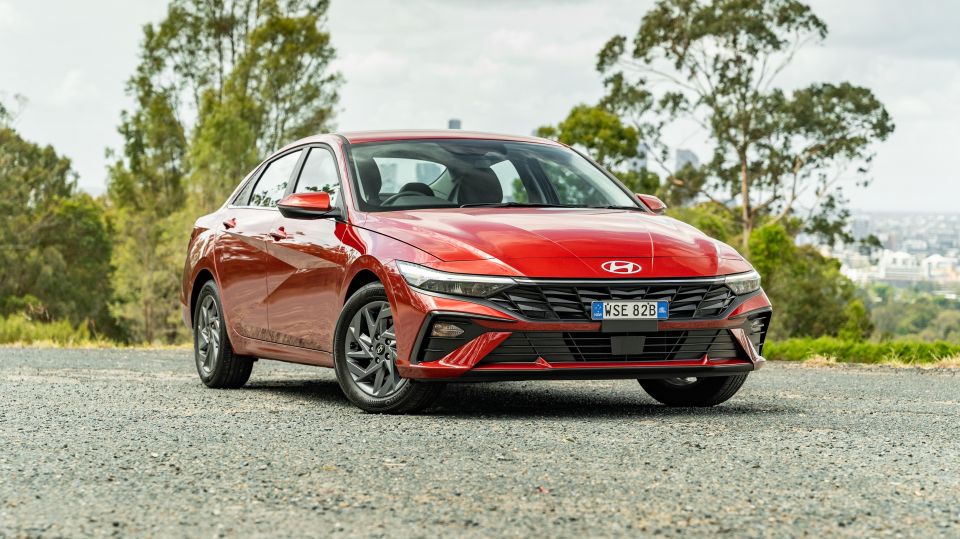


News Editor

News Editor


News Editor

News Editor
Quickly see how this car stacks up against its competition. Select any benchmark to see more details.
Where expert car reviews meet expert car buying – CarExpert gives you trusted advice, personalised service and real savings on your next new car.
The Hyundai i30 Sedan is popular in markets like Korea, where it’s known as the Avante, and the US, where it’s known as the Elantra.
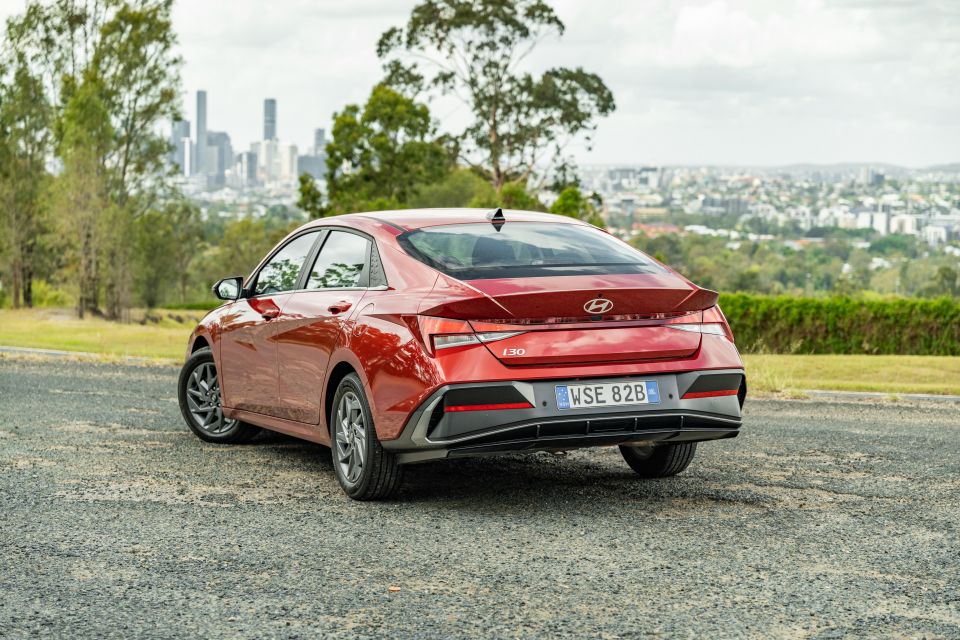
This helps explain why Hyundai has given this not-so-small small sedan a choice of four powertrains in Australia, ranging from the mild (the 2.0-litre four-cylinder tested here) to the thrifty (a 1.6-litre hybrid), and all the way up to the spicy N with its turbo 2.0-litre.
That’s a lot of variety for a small sedan in SUV-crazy Australia in 2024.
The small car segment here has long been dominated by hatchbacks, but the recently updated i30 Hatch now joins the hot five-door N variants in coming out of Czechia and is therefore a more expensive proposition than before.
That leaves the i30 Sedan to appeal to more price-conscious small-car buyers, and to do battle with booted versions of the Kia Cerato, Mazda 3 and Toyota Corolla. The base sedan tested here is the only i30 now with a price below $30,000 before on-road costs.
WATCH: Paul’s video review of the 2024 Hyundai i30 Sedan N
The i30 Sedan received a mid-life update for 2024 bringing, among other changes, freshened front end styling and a new continuously variable transmission for the base 2.0-litre engine.
The removal of the old six-speed automatic was probably the most worthwhile change with this update, apart from the belated local launch of a hybrid powertrain.
Not that the exterior update isn’t welcome. The front end is a little neater than before, though this is still a pretty wild-looking vehicle for a generally conservative segment.
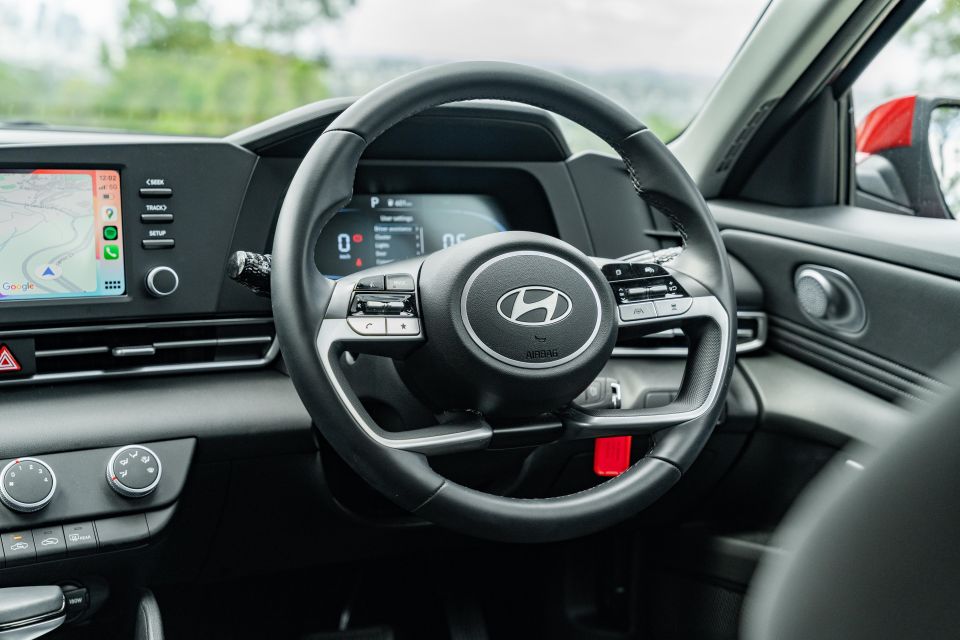
Hyundai likes to take design risks and they don’t always pay off, but the company must figure it’s better to be talked about than to be ignored. And it’s hard to ignore the sharp creases of the i30 Sedan’s body, as well as the unusual details like the textured C-pillar trim.
I’m personally a fan of the i30 Sedan’s styling, but the entry variant puts it in the worst possible light with its smaller wheels and the lack of a full-width rear light bar. At least the headlights are LED now.
With the discontinuation of Korean-built i30 Hatch models, the base i30 Sedan is now the cheapest member of Hyundai’s small car range – until the end of November, Hyundai is offering it for $29,990 drive-away.
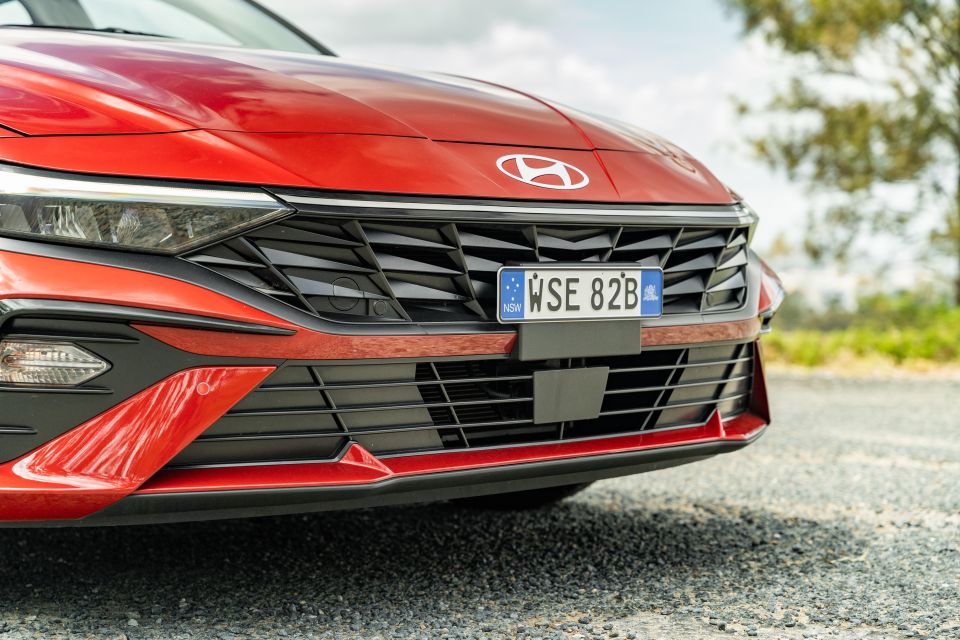
| Model | Price before on-road costs |
|---|---|
| 2025 Hyundai i30 Sedan | $29,000 |
| 2025 Hyundai i30 Sedan Hybrid | $33,000 |
| 2025 Hyundai i30 Sedan Elite | $33,500 |
| 2025 Hyundai i30 Sedan N Line | $36,000 |
| 2025 Hyundai i30 Sedan Hybrid Elite | $37,500 |
| 2025 Hyundai i30 Sedan Premium | $38,500 |
| 2025 Hyundai i30 Sedan N Line Premium | $41,500 |
| 2025 Hyundai i30 Sedan N Premium | $52,000 |
To see how the Hyundai i30 stacks up against its competitors, use our comparison tool.
Buy your new car without the stress. It's fast, simple and completely free.

Great service from Travis and team, second time I have used this business would not hesitate to recommend them to anyone
Craig C.
Purchased a Ford Ranger in Sunshine Coast, QLD
CarExpert helped Craig save $7,224 on his Ford Ranger, now let us save you on your next new car.
Get your BEST priceSUVs are commonly blamed for the slow death of mid-sized passenger cars, but arguably small cars have played a key role, too. And that’s because some of these small cars arguably aren’t small at all.
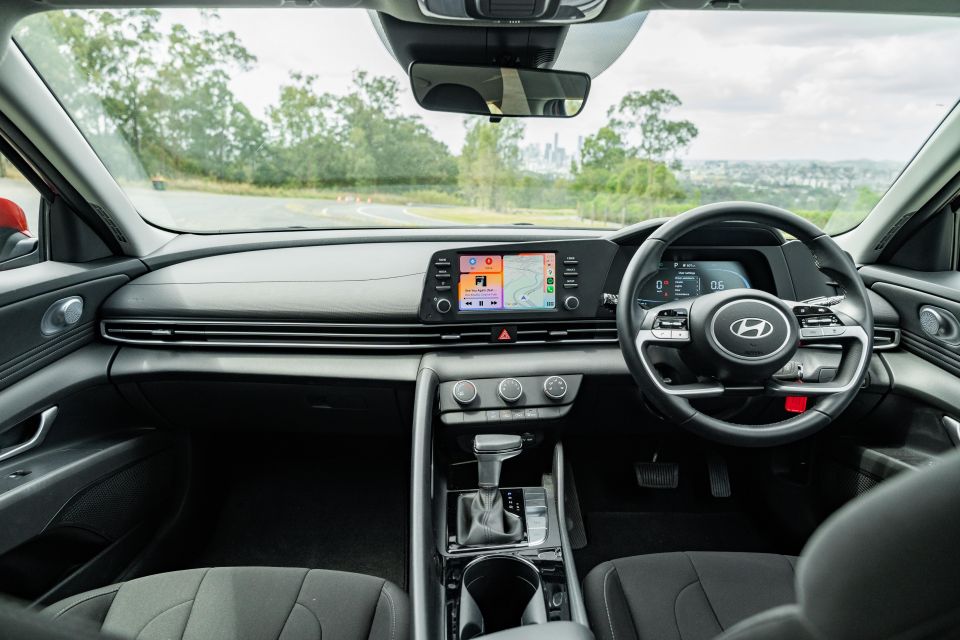
The i30 Sedan is just 35mm shorter than the old i40 sedan that was marketed as a mid-sized vehicle, and features a wheelbase just 50mm shorter.
It may be 200mm shorter than a new Sonata overall, but the difference in wheelbase is smaller at 120mm. And frankly, the Sonata doesn’t feel a whole segment up in size.
You need only step into the back to see this. Like the Sonata, the i30 Sedan has a swoopy roofline that eats into headroom – something that detracts slightly from the overall feeling of spaciousness. People over 180cm tall may find it a bit constricted.
There’s ample legroom, however, and someone this same height can easily sit behind a front-seat occupant of the same height with no problems.
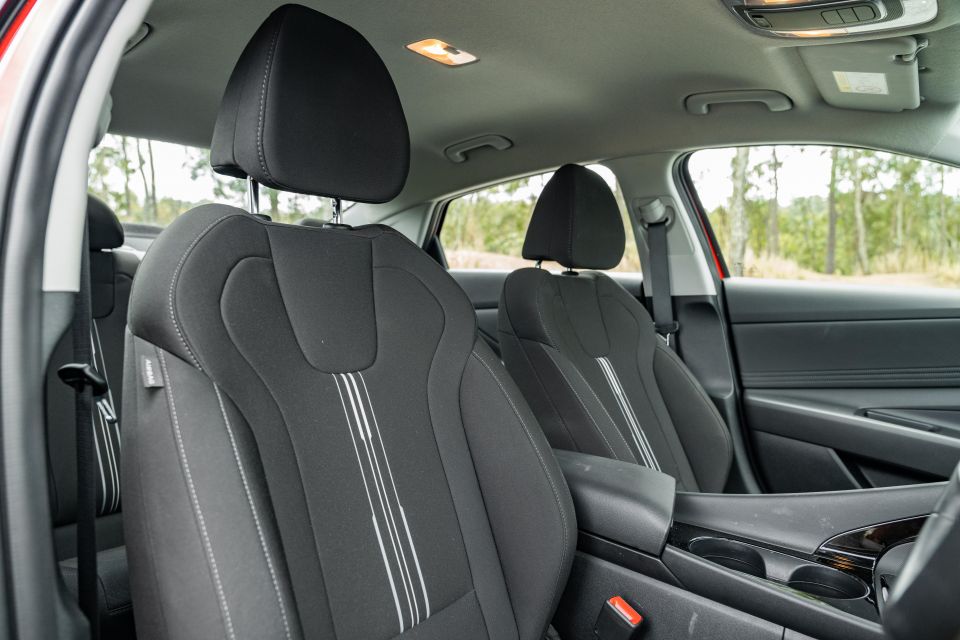
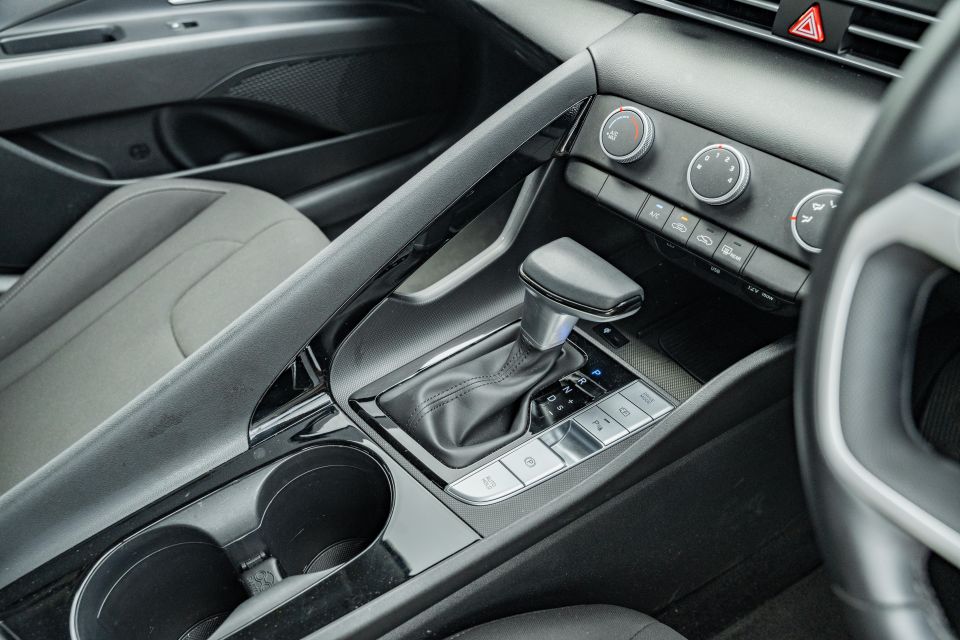
There’s actually more legroom than in the Sonata with 964mm, up 79mm on the purportedly mid-sized model. Rear shoulder room is down just 13mm on the Sonata, while headroom is down just 3mm.
In terms of amenities, there are rear air vents, a pair of USB-C outlets, a fold-down rear armrest with cupholders, and a netted pocket on the passenger-side front seatback.
If you’re fitting child seats, there are the standard top-tether points for all three seats, as well as ISOFIX points for the two outboard seats. The seats also split and fold 60:40.
Among its rivals, only the Kia Cerato feels as spacious back here as the i30 Sedan, with both putting the Mazda 3 and Toyota Corolla in the shade.
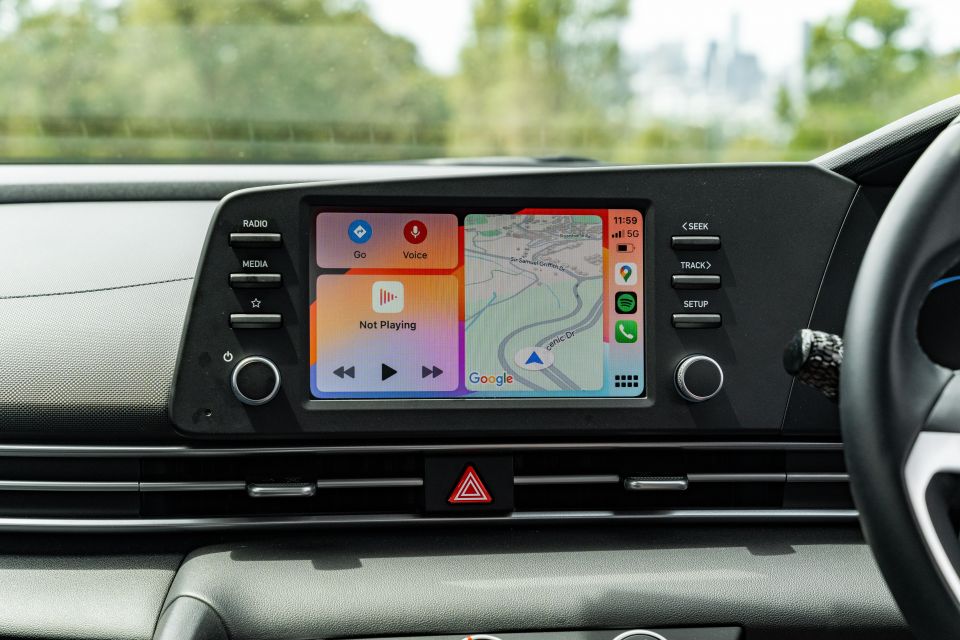
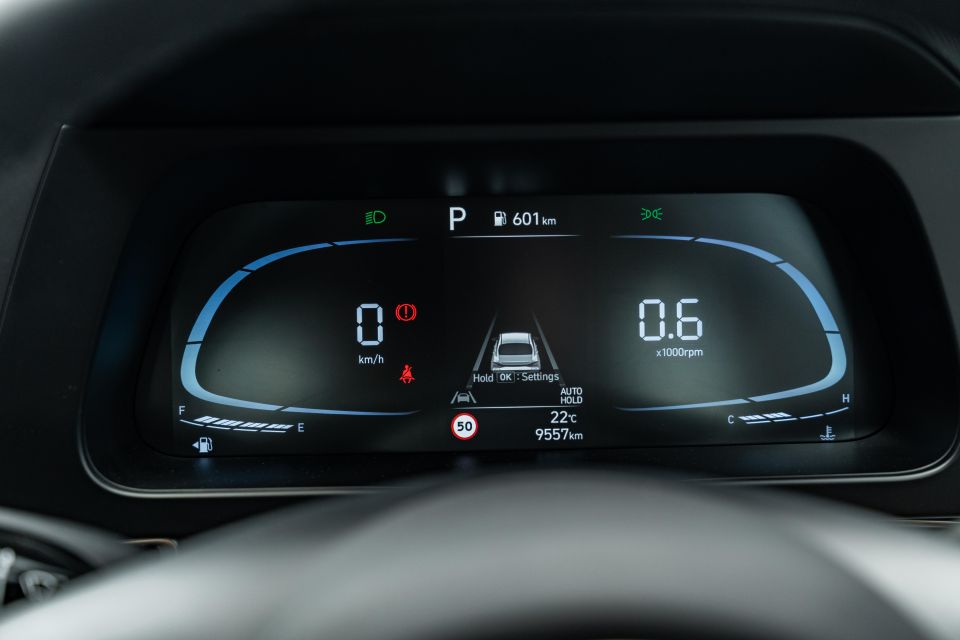
The more expensive Sonata may be longer than the i30 Sedan, but that doesn’t help much with boot space, either. It has just 6L more than the i30 Sedan, which has a competitive 474L of volume.
Under the i30 Sedan’s boot floor, you’ll find what has become a rarity in 2024: a full-sized alloy spare wheel.
The overall interior design is thoroughly modern, and with some nicer materials you could see this being used in a more expensive car.
There are some sacrifices to style. The door handles are mounted quite low on the door cards, which in turn means the drink holders are quite small and can barely fit a 600ml bottle.
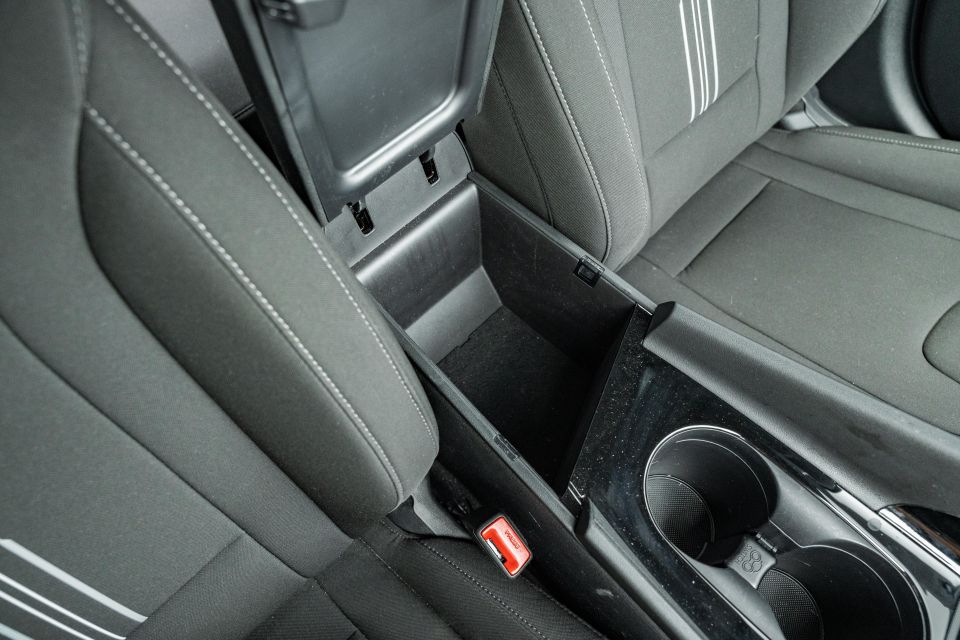
There are nice leatherette inserts on the doors and a soft-touch dash top with a texture that doesn’t try to ape leather graining as most dashboards do. But the tops and bottoms of the doors are finished in hard plastic, as is the lower half of the dash.
That’s not unusual for this segment, but we wish that distinctive grab handle was at least wrapped in some leatherette instead of hard, scratchy plastic.
Contemporary touches include a full-width metal-look strip on the dashboard that gives the air vents the ‘hidden’ look that’s all the rage right now, as well as a touch of piano-black on the centre console and the soft blue backlighting for the switchgear. The metal-look switches down here also have a whiff of Genesis about them.
You can tell this is the base i30 Sedan, though, by its smaller touchscreen (8.0 inches) and its use of Hyundai’s new entry-level instrument cluster setup, which marries two different types of digital displays.
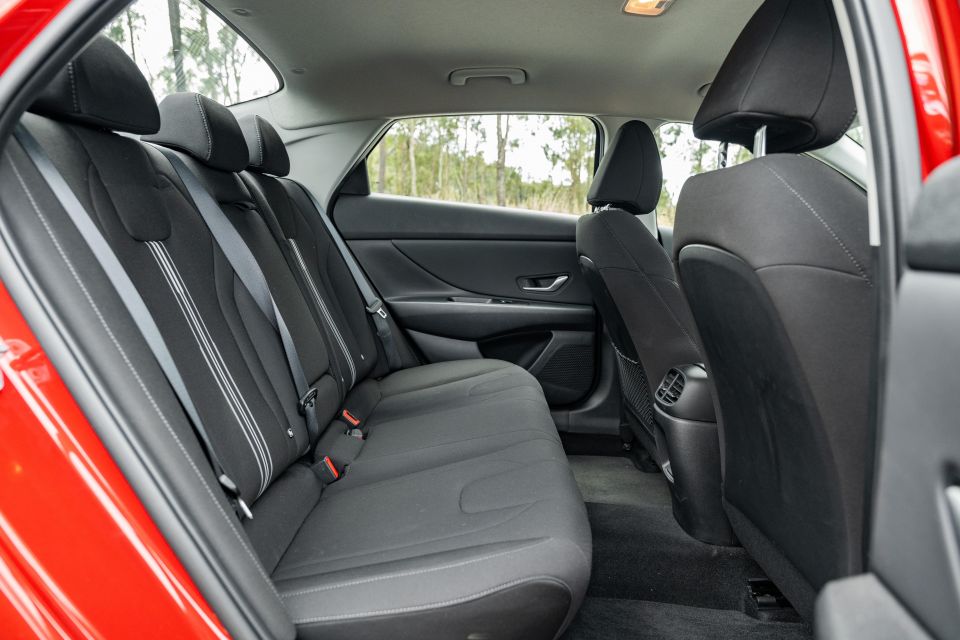
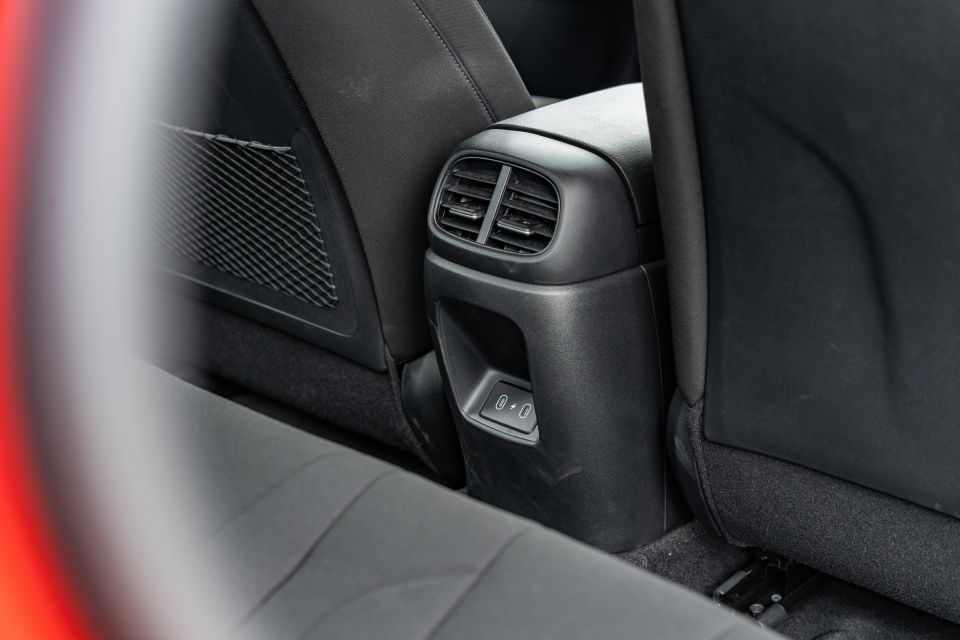
Analogue instruments would be preferable, and we suspect this setup will age swiftly and poorly. At least the middle screen is just a traditional TFT display, and contains the usual fuel economy readouts and settings menus expected of such a screen.
The infotainment system boasts wireless Apple CarPlay and Android Auto, unlike the larger 10.25-inch setup in more expensive i30 Sedans. However, it misses out on satellite navigation.
This entry-level Hyundai system is showing its age, but response times are still quick, reversing camera resolution is good, and there are physical shortcut buttons flanking the screen. The centre stack does look cheaper with this setup, though.
Where a drive mode selector sits in more expensive i30 Sedans, to the right of the steering wheel there’s what looks like a moulded plastic tray you’d find among the packaging for something you’d ordered online. It’s a goofy touch.
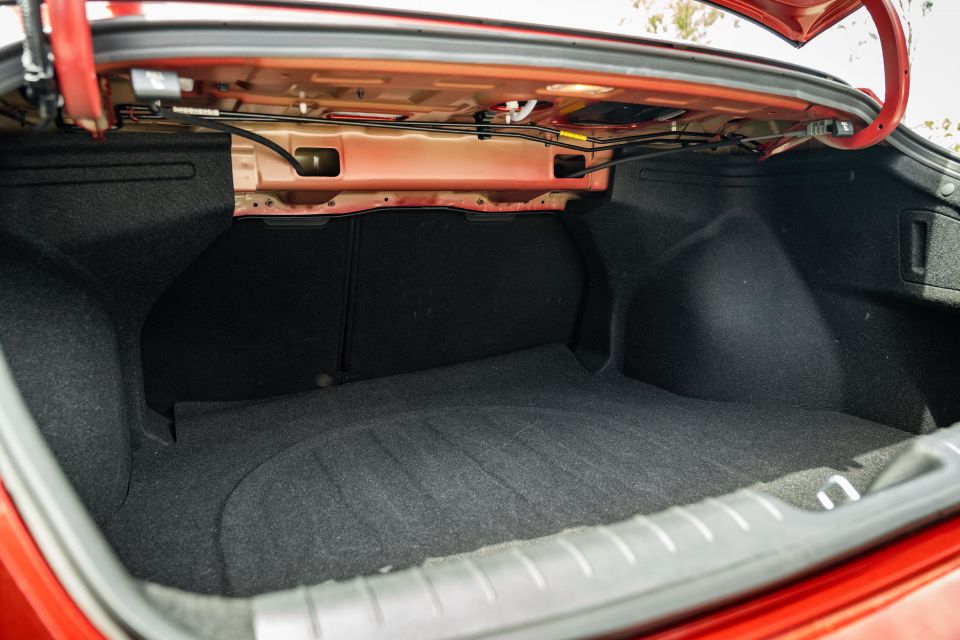
The base i30 Sedan also features manual air-conditioning instead of climate control… and once you’ve had a car with the latter, you get a bit spoilt by how easy it is to get the ‘right’ temperature.
Otherwise, there are no obvious cheapo touches to remind you that you bought the cheapest i30 Sedan. There are a couple of button blanks, but at least they’re symmetrical.
At the base of the centre stack you’ll find USB-A and USB-C outlets, plus a wireless phone charger.
The front seats have manual adjustment and are finished in black cloth upholstery with subtle white accents. They proved comfortable, even on longer trips.
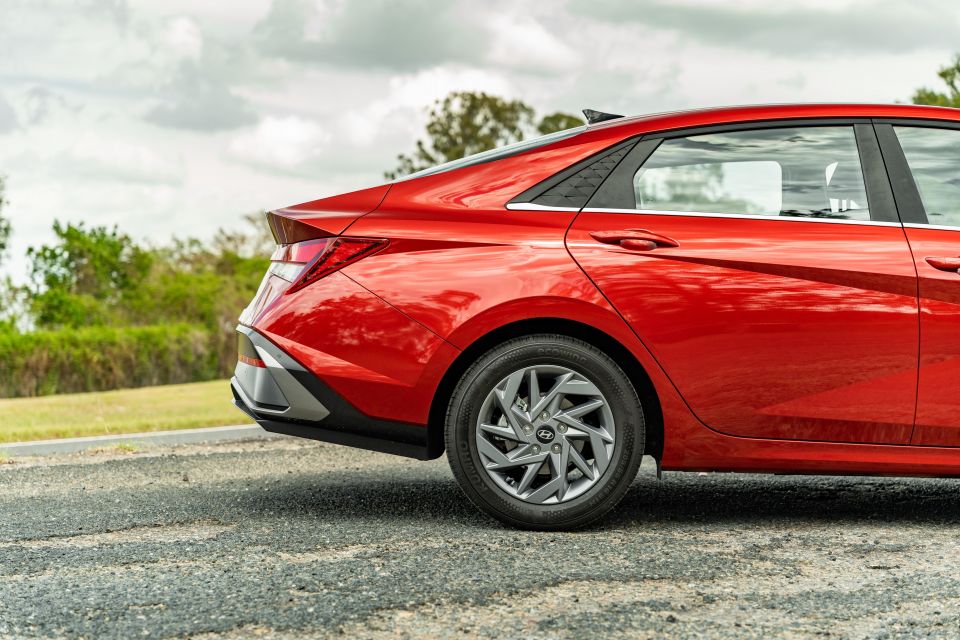
| Dimensions | Hyundai i30 Sedan |
|---|---|
| Length | 4710mm |
| Width | 1825mm |
| Height | 1420mm |
| Wheelbase | 2720mm |
| Cargo capacity | 474L |
To see how the Hyundai i30 stacks up against its competitors, use our comparison tool.
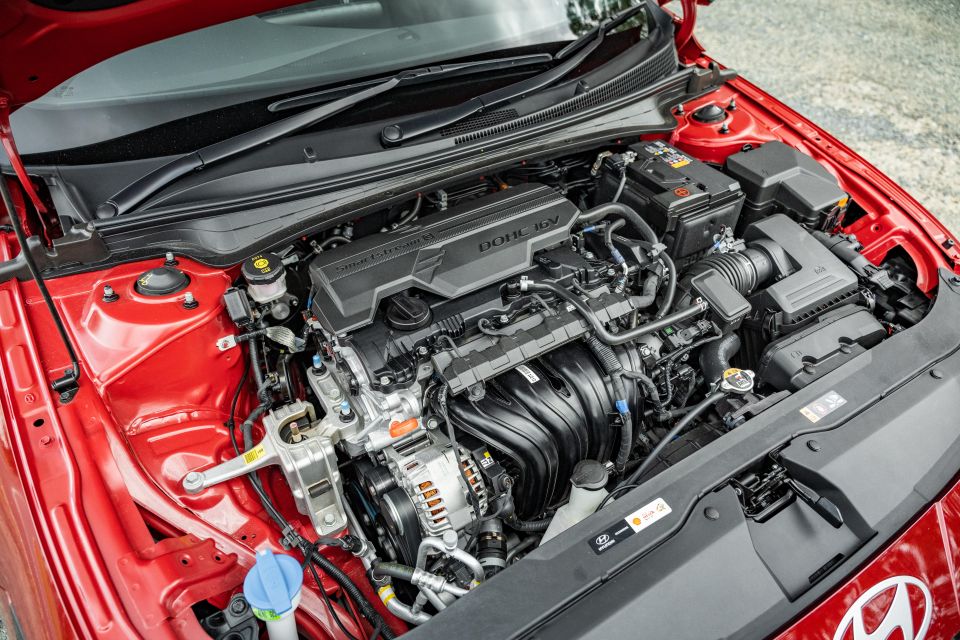
| Specifications | Hyundai i30 Sedan |
|---|---|
| Engine | 2.0L naturally aspirated 4cyl |
| Power | 110kW @ 6200rpm |
| Torque | 180Nm @ 4500rpm |
| Transmission | Continuously variable transmission (CVT) |
| Driven wheels | Front |
| Weight | 1260kg |
| Fuel economy (claimed) | 6.1L/100km |
| Fuel economy (as tested) | 6.8L/100km (mixed suburban, urban and highway loop) 7.8L/100km (over 500km of mixed-use driving) |
| Fuel tank capacity | 47 litres |
| Fuel requirement | 91 RON |
| CO2 emissions | 139g/km |
| Emissions standard | Euro 5 |
| Braked tow capacity | 1100kg |
To see how the Hyundai i30 stacks up against its competitors, use our comparison tool.
Hyundai made the right call in throwing out the i30 Sedan’s six-speed automatic with its mid-life update.
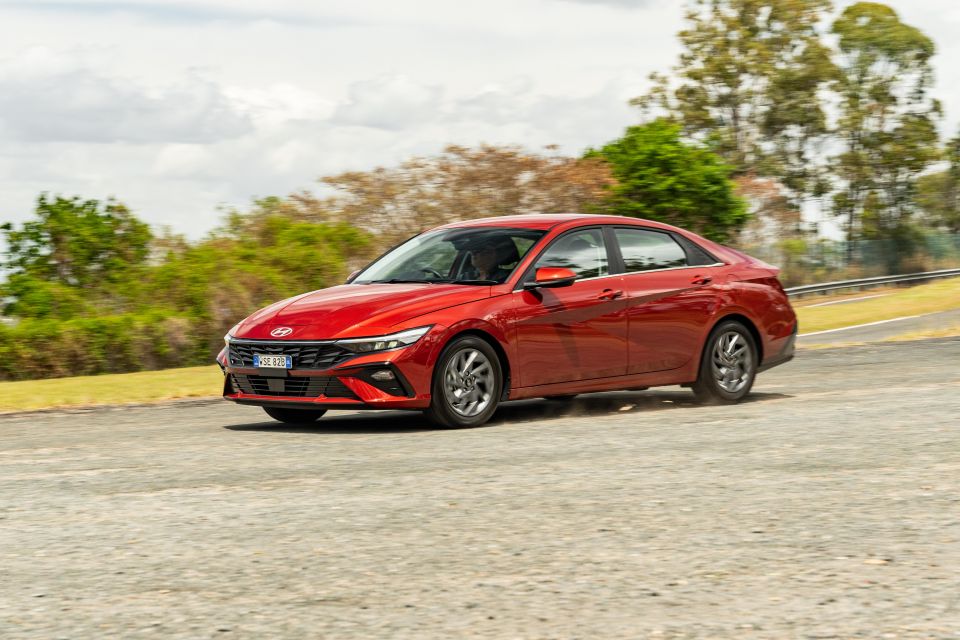
CVTs have their place, and this is one of them. The 2.0-litre four-cylinder still moans when accelerating, and nobody is going to accuse it of being a pleasant-sounding motor.
However, the CVT manages to extract the most out of this engine, giving the i30 Sedan a much zippier feel than before. With the CVT keeping the vehicle at its optimum RPM, you don’t have to wring the i30’s neck anymore – a lighter foot on the accelerator is now just fine.
Should you push the i30 further, it does get raucous under full throttle. And don’t bother with Sport mode. We gave it a try on a spirited mountain drive and the car would consistently stay at 4000rpm and make an absolute racket in the process.
The i30 Sedan’s competitive set isn’t exactly known for mellifluous engine notes, though, and in day-to-day driving the Hyundai is perfectly pleasant.
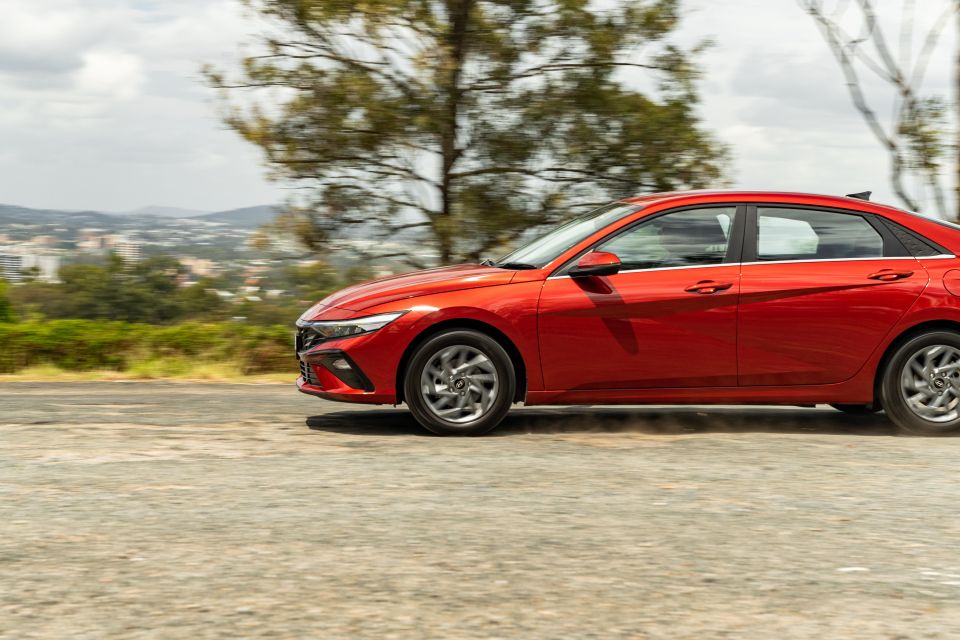
Where expert car reviews meet expert car buying – CarExpert gives you trusted advice, personalised service and real savings on your next new car.
Toss into corners and the i30 Sedan impresses with well-controlled body roll and minimal understeer. You can see why Hyundai developed a hot N version of this, as the chassis is quite good.
We wouldn’t call this base i30 Sedan overly sporty, though, and that’s largely due to the steering. It’s numb and lacking in feel, though it does at least have a pleasant weighting that makes the Hyundai a comfortable commuter and easy to park.
Sport mode adds some artificial weight, which is welcome, but there’s no custom drive mode so you have to put up with the more aggressive throttle mapping to get this.
There are no paddle shifters either, though you can move the shifter up and down between simulated shift points. We did this once, and then never bothered again. It works, but we scarcely see the point.
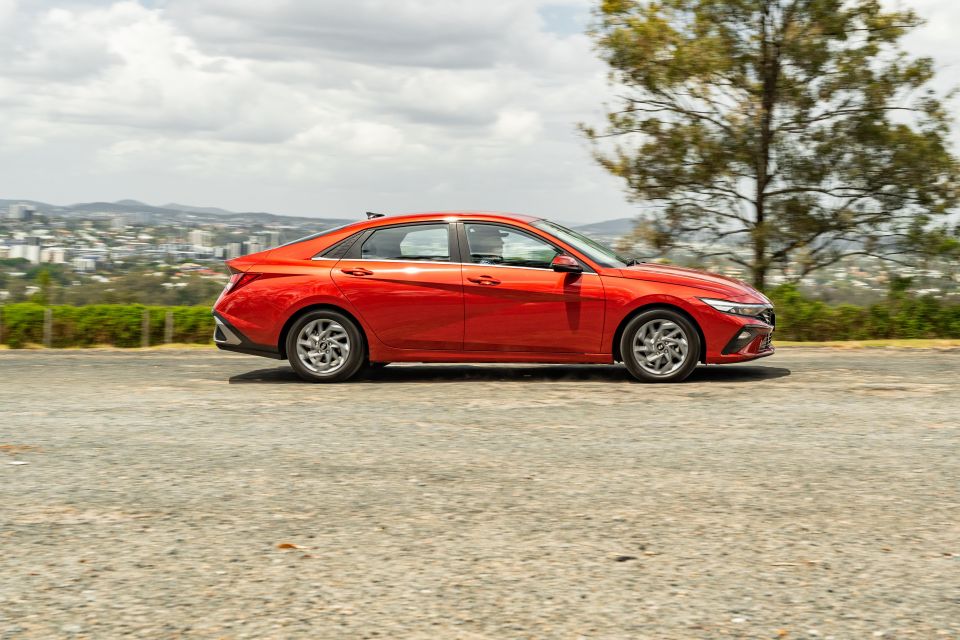
The i30 Sedan’s ride is on the softer side, and that’s just fine. We drove on some scarred and pitted roads and it proved comfortable – there’s some suspension travel, but it doesn’t feel like it has poor body control.
It also never felt floaty even over surface changes and undulations, settling quickly.
We also didn’t notice any uncouth movements from the torsion beam suspension at the rear; more expensive i30 Sedans feature a more sophisticated multi-link setup at the back. The Hyundai also proved comfortable on unsealed roads.
The cabin is pretty quiet for the segment, with not too much noise creeping inside even on coarser-chip surfaces or at highway speeds. You can easily carry a conversation with your passengers in either scenario.

Highway driving is made easier with adaptive cruise control and Lane Following Assist, which helps keep the vehicle centred in its lane. It doesn’t default to on, but can be easily activated with the push of a single button.
If you don’t like assertive lane assist systems, you won’t like Lane Following Assist. You may not even like the standard lane-keep assist, which can often be felt actively intervening.
However, it doesn’t have the nervous feeling of systems in, for example, some Chinese cars. It’s consistent in its operation, and is confidence-inspiring. And the good news is if you can’t stand it, you can easily turn it off with a (long) push of a steering wheel button too.
Hyundai has effectively added one more step before you get on your way, and that’s turning off the annoying speed warning system.

The speed limit assist system chimes sound when you go over the speed limit by even 1km/h. And when you enter a new speed limit zone. And when you’re going ‘over’ the speed limit in a carpark, even when the car hasn’t detected what the limit is.
Every single time I started the car, I’d use the steering wheel switch to scroll down to driver assist systems, then select speed limit warning, then select off. It takes multiple button presses to be rid of this, something Hyundai has thankfully been changing with newer models.
Here’s hoping the i30 Sedan also gets this update, as it’s particularly galling that turning off the alerts even turns off the displayed speed limit sign information. It’s as if the car is saying, “Oh, you don’t want me nagging you about the speed limit? Well then fine, I won’t tell you anything at all!”
Credit to Hyundai, though, for making LED headlights standard across the range with the mid-life update. They’re lovely and bright and feature automatic high-beam, dipping when they detect an oncoming vehicle.
To see how the Hyundai i30 stacks up against its competitors, use our comparison tool.
The i30 Sedan range opens with this unnamed entry-level variant.
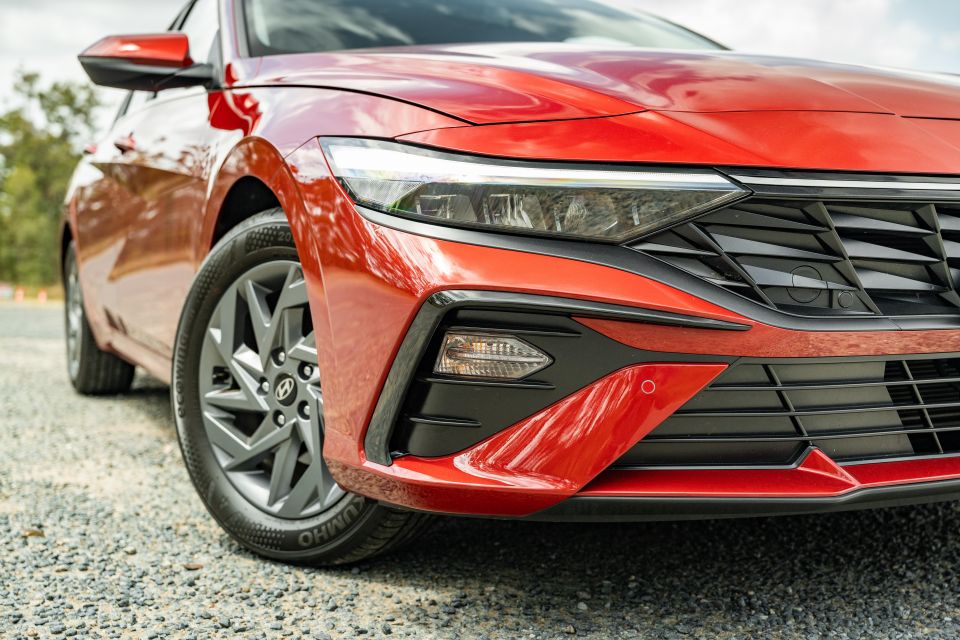

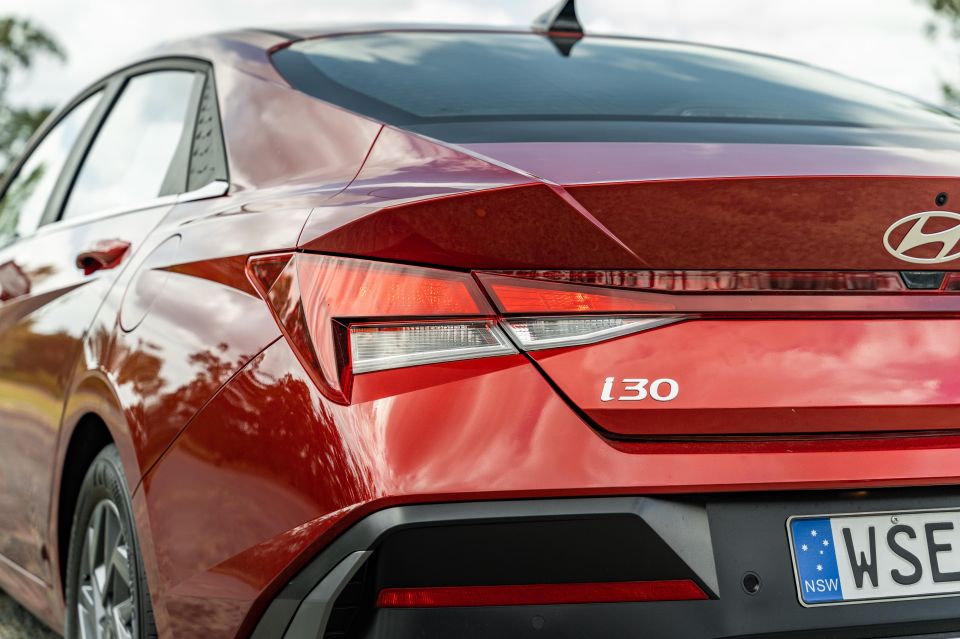
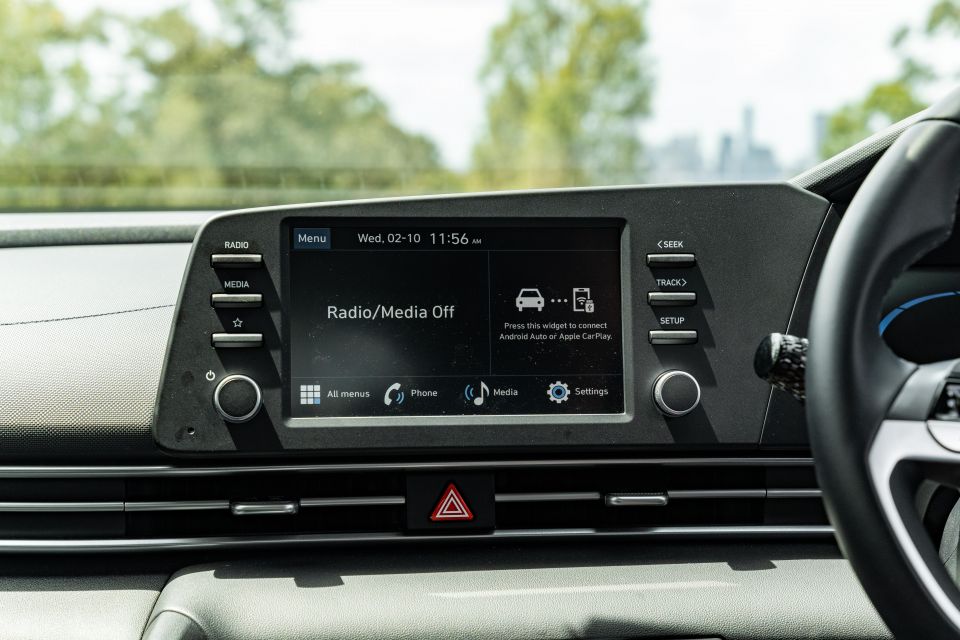
Standard equipment includes:
You’ll need to step up to the Elite for features like DAB+ digital radio, satellite navigation, power-folding exterior mirrors, and leather upholstery.
Hyundai’s Bluelink suite of connected car services also isn’t available on the base i30 Sedan.
The i30 Sedan has never been tested by ANCAP or Euro NCAP, though it received a Top Safety Pick nod from the US Insurance Institute for Highway Safety (IIHS).
Standard safety equipment includes:
You need to step up to the Elite to get blind-spot assist, rear cross-traffic assist and safe exit warning, with the Premium and N Line Premium being the only i30 Sedan grades with a surround-view camera and Hyundai’s Blind-Spot View Monitor.
Hyundai covers its range with a five-year, unlimited-kilometre new vehicle warranty.
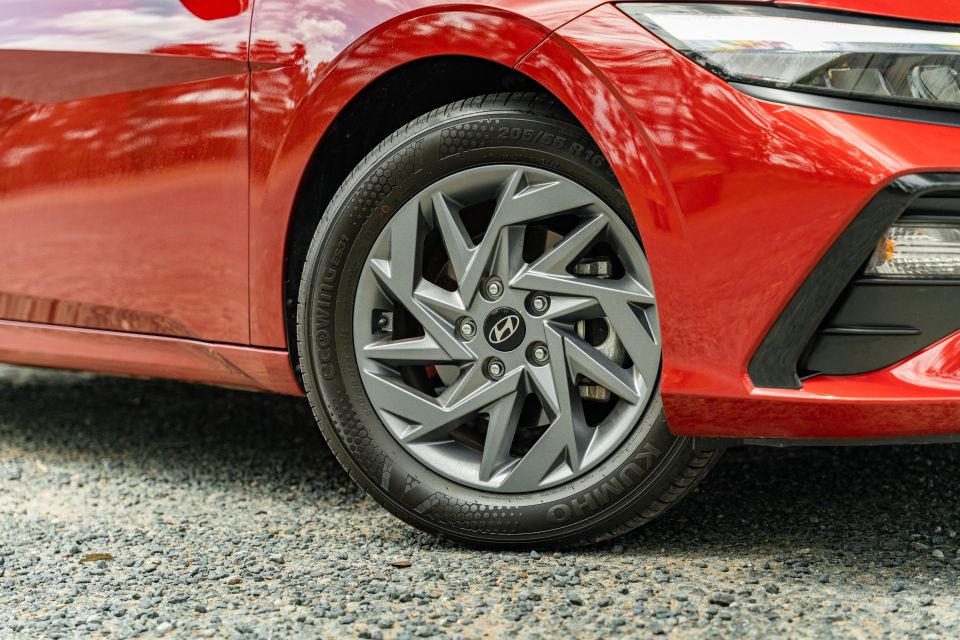
| Running costs | Hyundai i30 Sedan |
|---|---|
| Warranty | 5 years, unlimited kilometres |
| Roadside assistance | 12 months, then service initiated |
| Service intervals | 12 months or 15,000km |
| Capped-price servicing | Lifetime service plan |
| Total capped-price service cost | $1825 – 5 years |
To see how the Hyundai i30 stacks up against its competitors, use our comparison tool.
Buy your new car without the stress. It's fast, simple and completely free.

Great service from Travis and team, second time I have used this business would not hesitate to recommend them to anyone
Craig C.
Purchased a Ford Ranger in Sunshine Coast, QLD
CarExpert helped Craig save $7,224 on his Ford Ranger, now let us save you on your next new car.
Get your BEST priceThe Hyundai i30 Sedan punches above its weight class with a spacious cabin that would have had it easily been considered mid-sized just a few years ago.
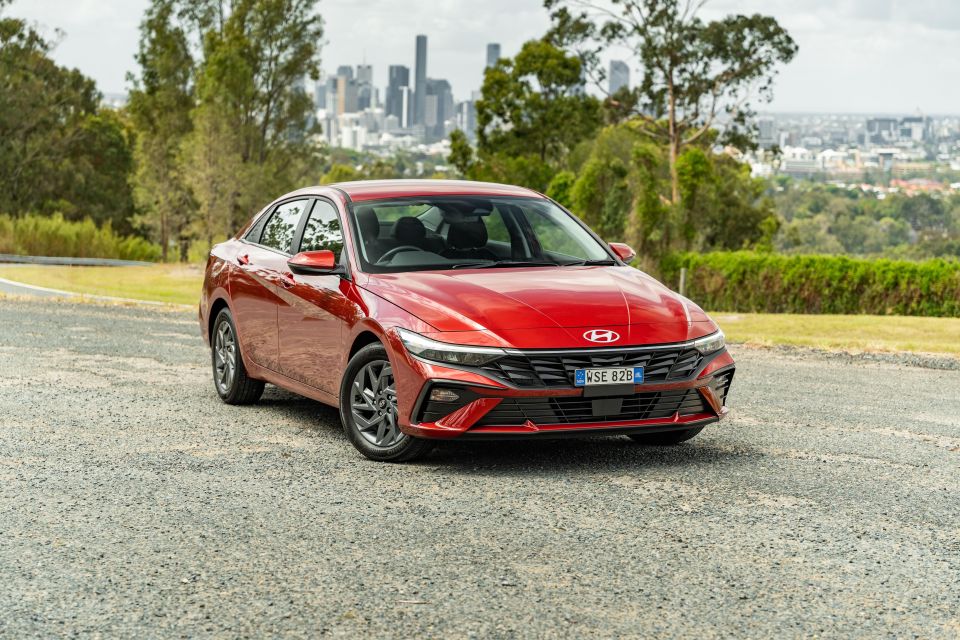
From a metal for your money perspective, then, the i30 Sedan is an excellent buy.
Fortunately, the i30 Sedan isn’t just cheap space. In addition to being roomier than all of its main rivals, it’s easy and comfortable to drive, with the CVT making the most of an admittedly average engine to make it much more pleasant than a Cerato.
It’s also more affordable in base guise than a Corolla or Mazda 3 and, whether you love or hate the looks, it’s more distinctively styled than any of them. It’s not the absolute cheapest vehicle in its segment, but it has more safety equipment than an MG 5.
For families on a budget, it’s a compelling option.
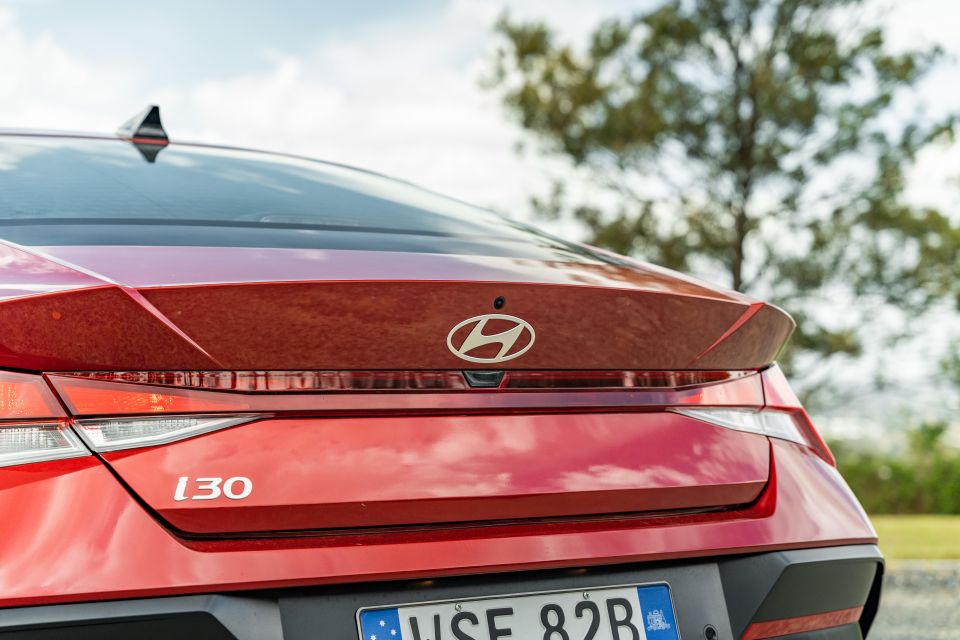
Interested in buying a Hyundai i30 Sedan? Get in touch with one of CarExpert’s trusted dealers here
Click the images for the full gallery
MORE: Everything Hyundai i30
Where expert car reviews meet expert car buying – CarExpert gives you trusted advice, personalised service and real savings on your next new car.
William Stopford is an automotive journalist with a passion for mainstream cars, automotive history and overseas auto markets.


William Stopford
1 Day Ago
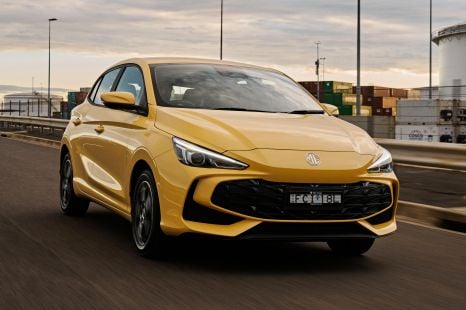

William Stopford
3 Days Ago
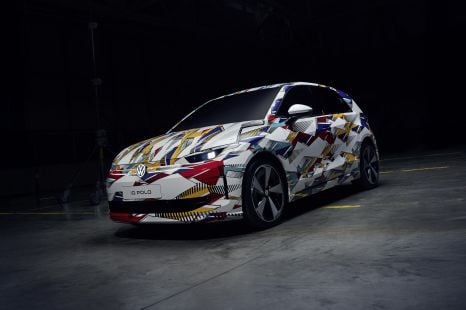

James Wong
10 Days Ago
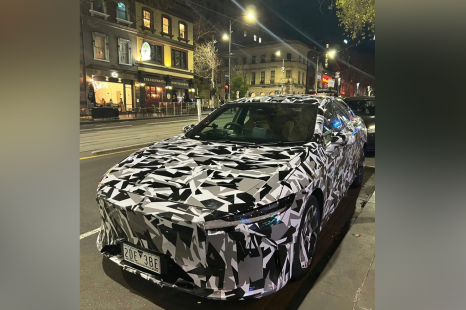

William Stopford
10 Days Ago


William Stopford
10 Days Ago
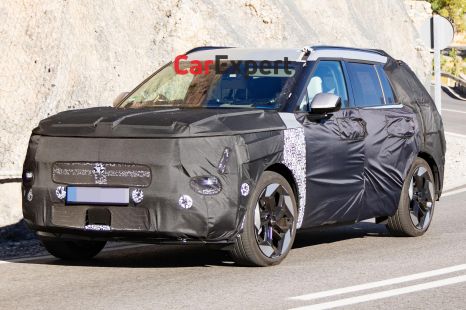

Derek Fung
11 Days Ago